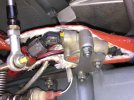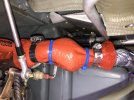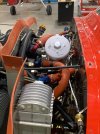Ed Haywood
En-Route
I am ordering all new hoses for my overhauled engine install. I plan to send the old ones out for duplication. Currently I have type D stratoflex 124 with pull-on firesleeve. Looks like integrated firesleeves would add about 10% to price. Benefits touted are neater appearance, slightly smaller diameter, and less concern with wicking oil if sleeve is nicked. Should I spring for that?
While I am at it, does anyone have a favorite hose vendor? I have about 10 recommendations from Facebook. Are they all pretty much the same? If prices are competitive, I am inclined to go with Spruce, mostly because I already have an account and payment method set up with them. Plus when it comes time to do paperwork, it is helpful to have invoices with item lists in one location.

While I am at it, does anyone have a favorite hose vendor? I have about 10 recommendations from Facebook. Are they all pretty much the same? If prices are competitive, I am inclined to go with Spruce, mostly because I already have an account and payment method set up with them. Plus when it comes time to do paperwork, it is helpful to have invoices with item lists in one location.






